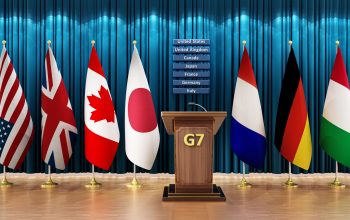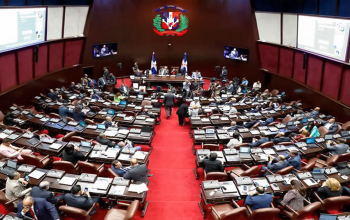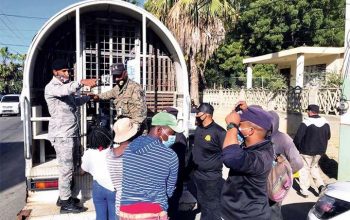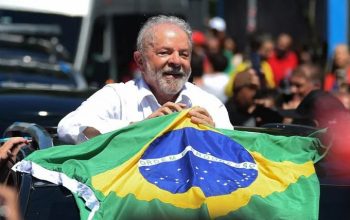news
“Putin’s War”, an article by Dr. Leonel Fernández
March 7, 2022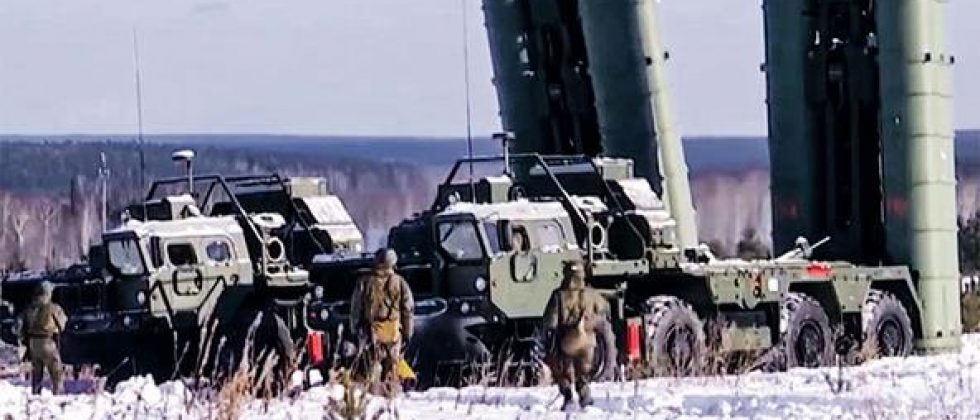
Why has President Vladimir Putin of Russia ordered a military intervention on the territory of Ukraine? What are his strategic goals? What does this decision mean for Russia´s relationship with the Western world: that is with the United States and the European Union?
Despite the fact that this recent military occupation of Ukraine is only the latest in a series of events that have been taking place since 2004, the truth is that the origin of this conflict – aside from the current situation – originated with the fall, in 1991, of the so-called popular democracies of Eastern Europe and in the dissolution of the Union of Soviet Socialist Republics (USSR).
With the collapse of the Soviet Union, which occurred without a single shot being fired or a bomb being dropped, 15 new sovereign and independent states emerged. Among them, the Russian Federation, presided by Boris Yeltsin. The Federation has the largest territory, is the most populous, and boasts the greatest economic and military power.
Although Russia extends from Eastern Europe to the Pacific Ocean, with a land surface that is twice the size of the United States, the disappearance of the Soviet Union reduced the scope of its borders to what it once was at the beginning of the Roman dynasty more than 400 years ago.
For Vladimir Putin, a former KGB intelligence officer and who became president of his country in 1999, the breakup of the Soviet Union represented the greatest geopolitical catastrophe of the 20th century.
As a consequence of this situation, Russia’s objective was to rise from the economic ruins in which it was buried, and to build economic, political and military integration mechanisms with the former Soviet republics and to reposition itself as a power on the international scene.
According to the vision of its leaders, the convulsive situation would be transitory, and the lost territories reincorporated into what it once was. That goal led to the creation of the Commonwealth of Independent States (CIS), with the participation of 12 post-Soviet States. Agreements were signed for the collective defense, economic union and the creation of a free trade zone.
At the center of this community would be Russia, who would have absolute control of the nuclear arsenal accumulated during the Soviet era; with great wealth generated by its vast oil and gas deposits, and with veto power in the Security Council of the United Nations. Also, it would become a member of the G-8; of the World Trade Organization and join through association the European Union and the North Atlantic Treaty Organization (NATO).
Conflicting Outlooks
In a way, the gradual rehabilitation of post-Soviet Russia was achieved, paradoxically, with the support and collaboration of the United States and the European Union. This occurred during the Mikhail Gorbachev and Boris Yeltsin administrations, but also at the beginning of the current Putin era.
Everyone thought that Russia would make a transition from a model of a socialist economy (or planned economy), to one of a market economy, and that it would organize itself politically based on the liberal democratic system of the Western world.
The Russians also cooperated with the United States. Vladimir Putin was one of the first Heads of State to show solidarity with Abraham Lincoln’s Fatherland when the terrorist attacks of September 11 took place. Later, he authorized the use of military bases in Central Asia so that US aircraft could fly from there to Afghanistan.
However, there were sectors in the United States cautioning this policy of rapprochement with post-Soviet Russia. For example, one of the great political thinkers of the United States on geopolitical strategies, Zbigniew Brzezinski, stated that it was a mistake to treat Russia as an ally when, on the contrary, it had lost the Cold War. He argued that the United States could not enter into a period of historical amnesia, and that what was needed during this post-Soviet period was regional stability based on geopolitical pluralism.
In all honesty, the disagreements between the United States, Europe and Russia arose when, during the post-Cold War period, two very different visions began to confront each other: NATO´s vision, with its plans to expand toward Eastern Europe and the one linked to the Eurasian Union. Vladimir Putin´s great project.
For two decades, NATO began to open its doors to former members of the Warsaw Pact, both in Eastern Europe and in the former Soviet republics. These actions, carried out by the transatlantic military alliance, naturally preoccupied Russia. But the conflict grew when Georgia and Ukraine, two pillars of regional geopolitics, began to turn towards the West.
Putin’s Strategy
What is Russia demanding from the United States, Europe and NATO, in order to put an end to the current war?
In the two draft agreements drafted to reform Europe’s security structure, Moscow made several demands on NATO. First, end all eastward expansion, including the future membership of former Soviet republics such as Ukraine. Second, withdraw Western troops from Eastern European countries. Thirdly, return to the United States the short – and medium-range nuclear missiles deployed throughout Europe.
By making these requests, Russia knew in advance that they would not be met by the Western powers, at the risk of falling into an un-strategic act of political, diplomatic and military weakness.
For some, the inadmissibility of these beforementioned petitions constitutes the pretext for the military incursion. This being the case, it would be necessary to start from the premise that the military intervention in Ukrainian territory not only seeks to stop NATO’s expansion into former post-Soviet space, which would be understandable, but also to apply the strategy of consolidating Russia as a regional power.
In its foreign policy, Moscow places special emphasis on what it calls the “close foreigners,” meaning the former Soviet republics. Faced with the demands made by the “close foreigners,” it began to demand respect for their sphere of influence or vital space.
But, in addition, it aspires to the political reconfiguration of what the Soviet Union once was. It promotes a neo-Soviet nationalism policy. It seeks to create the Eurasian Union, which is not only a project of economic integration or commercial cooperation, but a true political project of converting Russia into a true world power.
That is Putin’s great dream: to resurrect the corpse of the Soviet Union. But despite all his audacity, he fails to understand that this is no longer possible. In order to make that dream shine forward, it meets with the opposition of the other former Soviet republics, the severe sanctions that will shake its economy, as well as that of the rest of the world, and the international isolation in which he finds himself for having defied reason and having lost his sense of prudence.

